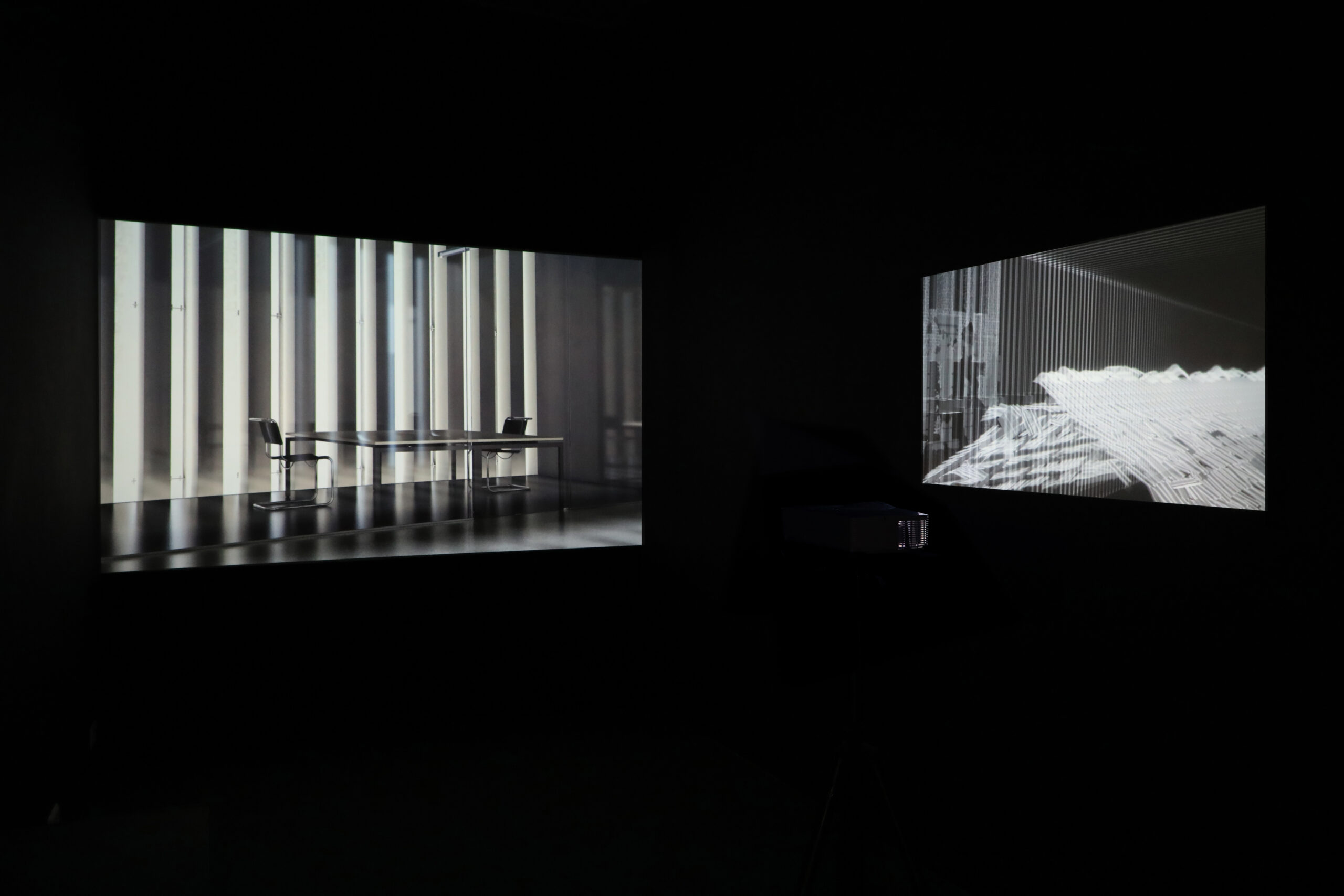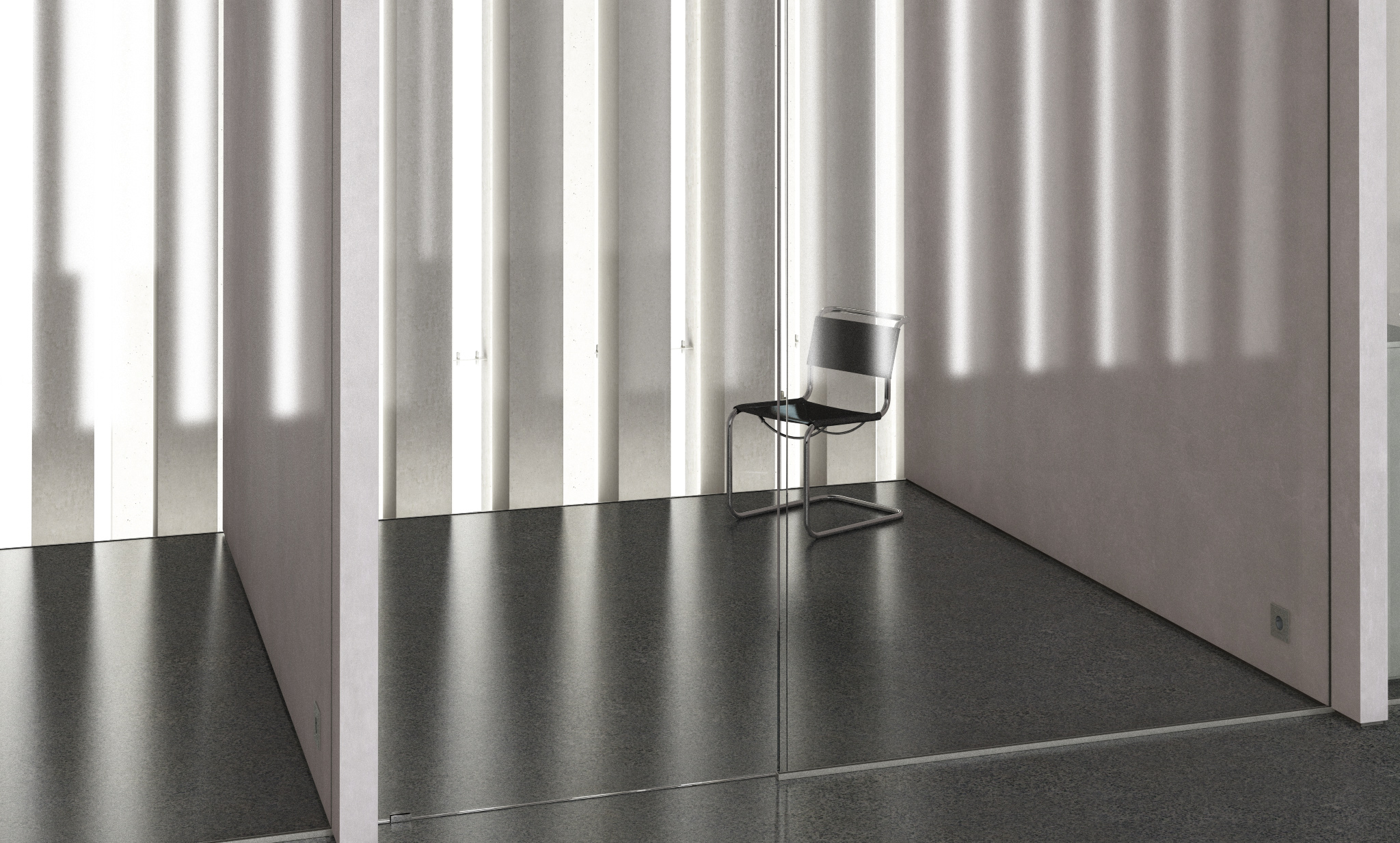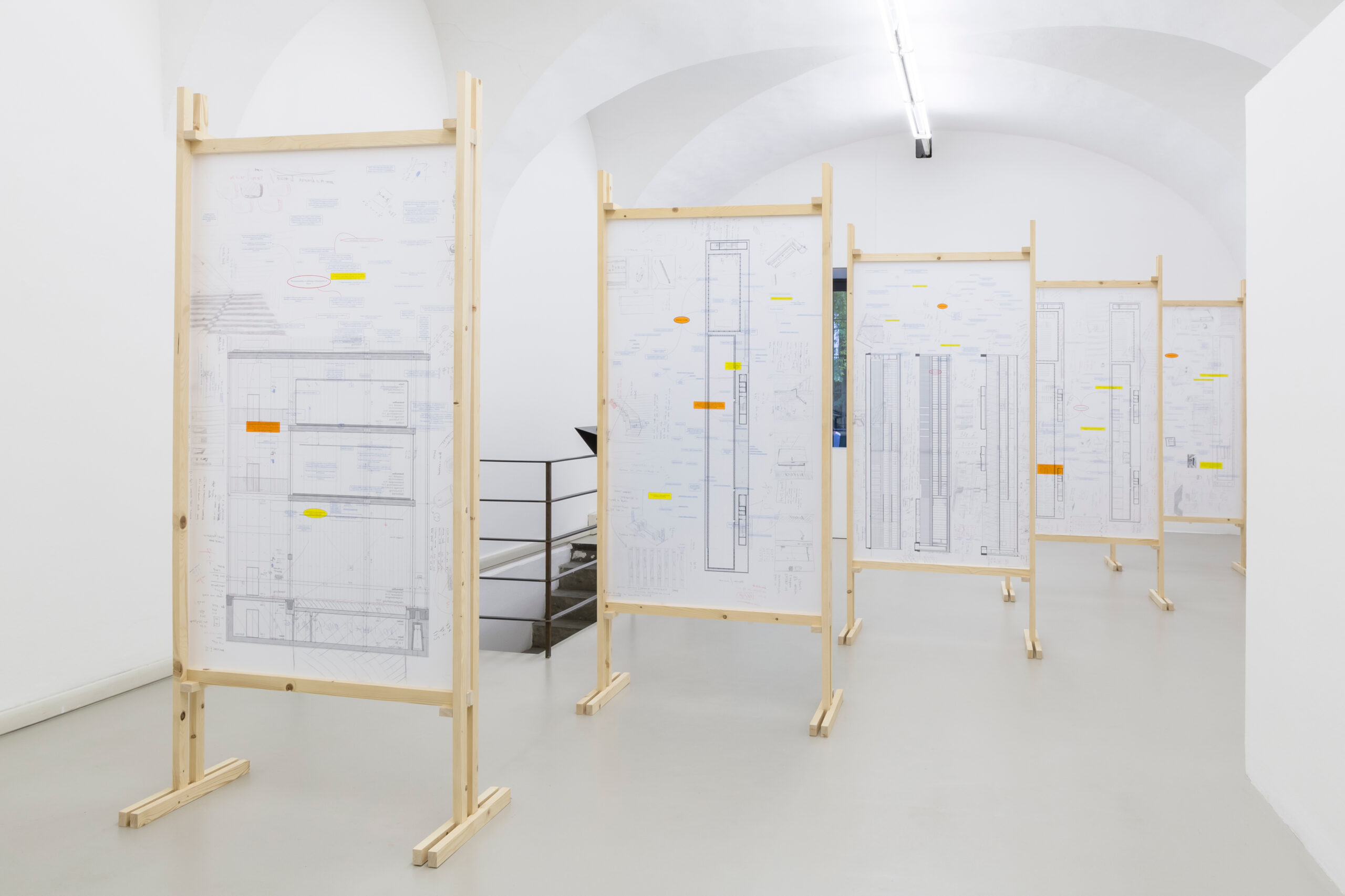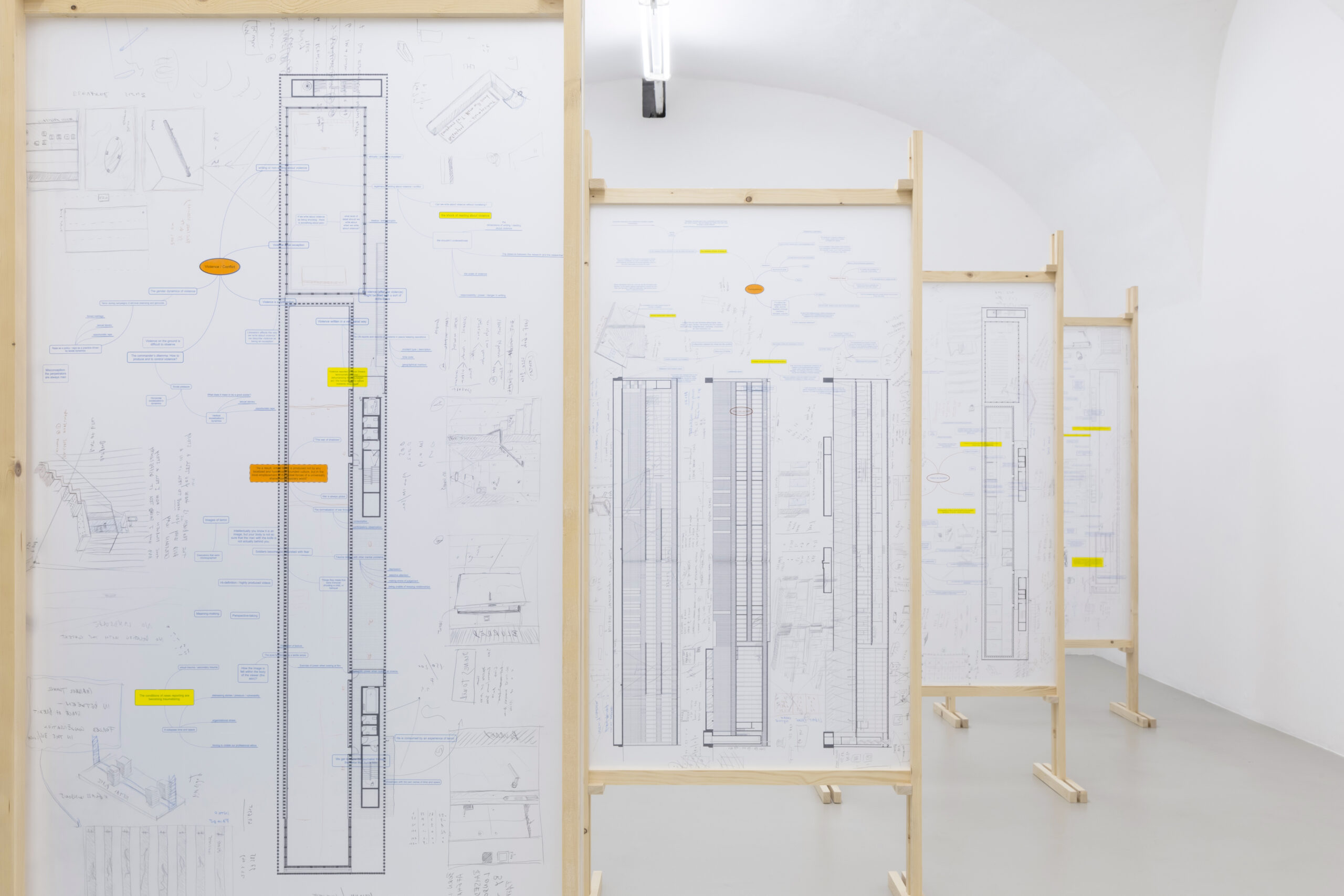
Installation view of Topography of Terror (19.12.2016) at ar/ge kunst – Kunstverein Bozen, Photo Guadagnini, 2017 © argekunst, Bolzano

Installation view at Rozenstraat Amsterdam in the exhibition Never Again, 2020

Film still from Topography of Terror (19.12.2016), Rendering, Credits the artists

Installation view of Topography of Terror (19.12.2016) at ar/ge kunst – Kunstverein Bozen, Photo Guadagnini, 2017 © argekunst, Bolzano

Installation view of Topography of Terror (19.12.2016) at ar/ge kunst – Kunstverein Bozen, Photo Guadagnini, 2017 © argekunst, Bolzano

Detail from the installation
Topography of Terror (19.12.2016)
2017
Film
CGI Film, Full HD, Colour/Surround Sound
31′
In collaboration with artist Elisa Caldana
Narrator: Khalid Abdalla
Supported by Hessische KulturStiftung, Germany and Acme Studios, London
Courtesy MAXXI Museum Rome (Permanent Collection) and the Artist
Topography of Terror (19.12.2016) is a film set in the never realised building for “Topographie des Terrors” Foundation in Berlin, originally conceived by Swiss architect Peter Zumthor as Documentation Centre, located on the site of buildings that during the Nazi regime – from 1933 to 1945 – were the headquarters of the Gestapo and the SS.
The film focuses on ways of constructing information in contemporary journalism, articulating a reflection on the role and the value of images as tools to perpetuate terror and manipulate our perception of reality.
A key aspect of the film is the virtual space of the non-existing building which is filled with the voice of the main character, recounting a moment in the life of a journalist affected by secondary traumatic stress disorder caused by overexposure to violent imagery. Torn between the risk of being a perpetrator of terror – by spreading fear through sensationalism – and moral responsibility, the journalist asks himself: what is the future of the free man in a world where terror is the new normality? Through the interplay between images, narrative, and sound, a reflection emerges exploring the effects that terrorism practices have on diverse populations and how those practices act upon the collective imaginary of Western nations, including the relation between present and historical time, and between opposing but coexisting cultural identities.
The building is taken as a scenario and conceptual platform. Since it was never realised, it represents the image of a future-present that never came into being; it thus occupies an ideal place of potential futures and for this reason, it has become the platform for a discussion on current and potential future terrors.